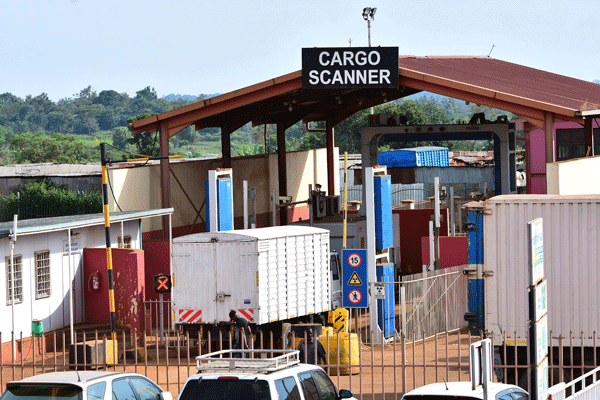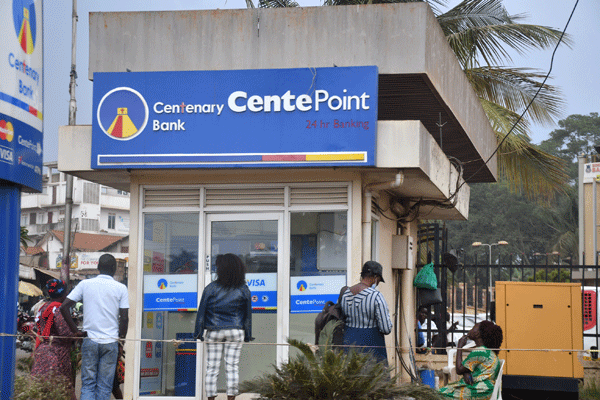Prime
Get to know about motor insurance policies

A police officer looks at the wreckage of a Nissan Patrol that was involved in a head on collision with a trailer at Kakira along the Jinja-Iganga highway. Insurance policies such as Third Party and Comprehensive cover cater for such accidents but not all motorists and other parties involved follow-up to benefit from the claims. PHOTO BY WILLIS OMITH
Many comprehensively insured motorists wonder why their motor vehicle insurance premiums on renewing their policies have increased or have remained the same, one often hears complaints like “I have not had a claim in the last four years or so, how could my premium increase at all?”
The answer lies in the situation where an insurance company or indeed perhaps a considerable number of insurance companies incur a loss in their motor underwriting results.
Road accident statistics in Uganda according to World Health Organisation’s (WHO) 2013 global status report on road safety, Uganda had 2,954 deaths in 2010 as a result of road accidents.
The WHO report projects that by 2020 road accident health losses will rank second only to those of HIV/Aids. According to the Injury Control Centre, there are 20 boda boda related cases at Mulago National Referral Hospital every day, putting a huge strain on the country’s limited health budget.
What aspects then impact on the insurers underwriting result to produce a profit?
That the losses of the few shall be borne by the premiums of the many. Undoubtedly in this scenario, the insurer will consider the various statistics before them in a scientific and objective manner.
The insurer will then charge a higher premium in an attempt to bring the profit/loss scenario to an even keel that helps it afford the total sum of claims costs and relevant
motor risk portfolio expenses; and of-course to achieve profit for the shareholder.
The loss
Let us indulge in the basic concept of insurance Annual statistics are collected and relevant aspects extrapolated. Particularly, the insurer ascertains total motor premium revenue before deducting the total claims costs and acquisition costs, thus arriving at a result in effect being either a financial loss or profit for their motor risk portfolio.
The profit/loss statistics discussed above alone are not sufficient to prove that a motor insurer has registered an actual financial loss. One might constructively argue that:
• There is one source of income not being shown; the investment earned by the insurer on premiums received.
• The reserves from claims hitherto not settled are conservatively set at too high a level, that is the insurer will end up paying less than the amounts reserved in their ledgers or
• The acquisition costs are overstated.
Let us consider how valid these arguments are:
Investment income: For anyone that follows financial markets, returns on investments have been on a downward trend for a while now; even an optimistic rate of 15 per cent would not change a motor portfolio loss that much therefore.
Reserves: There is no definite answer to this however insurers are very careful to reserve as precisely as possible. One needs to only consider the current inflation rate and fluctuations in worldwide fuel prices that affect the cost of repairs/spare part cost and the ever increasing trend in court awards for injuries and fatalities to understand why this happens.
Acquisition costs: This refers to costs that an insurer bears to obtain the business. This would typically be commission to intermediaries, operational or management costs and re-insurance costs. Insurers pay up to 12.5 per cent in commission back to agents and brokers. Further the insurer pays for own operational costs and ever increasing re-insurance costs. Since through reinsurance, risks are spread and shared worldwide, events of a certain scale occurring in one country would affect the cost of insurance all over the world, the New York terrorist attacks of September 11, 2001 had such an effect; as may the recent Kenyan Westgate attack. What is an insurer likely to do in this situation?
There are two courses of action; firstly, the insurer may consider increasing premium or secondly reducing expenses. Before increasing premium a motor insurer needs to see which parts are causing the worse of claims; so that the increases are more heavily directed towards those ‘guilty’ sectors.
These will vary from one insurer to the other but one can safely assume that the following will be some of the causes tackled:
Third party insurance: The average premium charged in Uganda for saloons is Shs65,000 (including Shs35,000 stamp duty collected
on behalf of the URA); statistics would be used to check as to whether third party claim costs on per insured vehicle basis exceed this amount.
Young drivers/ newly licensed drivers: Research has shown that drivers aged less than 25 years are two to four times likely to have an accident than those aged over 30 years. Albeit it is likely that premium loadings on newly licensed drivers are not sufficient to cover claims costs generated by these new and young drivers.
Controlling repair costs: Insurers have tried various ways of controlling costs especially the supply and pricing of spare parts to avert premium increases for policyholders to no avail. It may be prudent to borrow a leaf from our British counterparts who use a system called the Thatcham Times System (UK), which briefly is an internationally recognized scientific and precise method of estimating the cost of vehicle repairs.
Meanwhile, NIKO Uganda and most credible insurers ensure an equitable price is paid for vehicle repair of vehicles and that abuses are minimised using the available technologies.
Vehicle features: Main factors affecting premium calculation on motor vehicles are: the age of the driver; cover; claims history; use of the vehicle; cubic capacity and value of vehicle. the factors ordinarily considered are the cubic capacity and the value only, no consideration is taken of other factors such as the ‘power to weight ratio’; the ease to repair the vehicle; the availability of spare parts; the ease of breaking into them and safety features such as the airbag or anti-lock brakes.
Insurers may in the future consider these factors and charge higher premiums, for example, on vehicles with costly parts or the vice-versa for mitigating aspects.
Minimum rates paid
Motorcyles
Excess: own damage: 10per cent claim, minimum Shs100,000.
Theft and total loss: 15per cent of claim, minimum 100,000. Recommended rate 10per cent
Motor (private)
Saloons, station wagons and pick-ups (private use only)
Excess: own damage: 10per cent claim, minimum Shs100,000.
Theft and total loss: 15per cent of claim, minimum 100,000. Recommended rate 4per cent
Buses: (Minibus/taxis, coasters &buses)
a)PSV Recommended rate 7.5per cent
b)PMO/corporate &school buses Recommended 6per cent
Special types: Ambulances, hearses, bullion vans, fire fighting trucks, farm vehicles, motor recovery vehicles
Excess: own damage:10per cent of claim, minimum. Shs200,000.
Theft and total loss: 15per cent of claim,minimum.200,000.
Recommended rate 4per cent
Driving Schools
Excess: own damage: 10per cent of claim, minimum. Shs100,000
Theft and total loss: 15 per cent of claim, min.Shs100,000 Recommended rate 5 per cent




